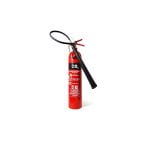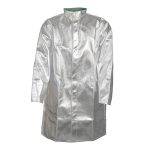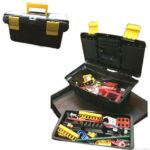Your list is empty, add products to the list to send a request
The Role of Fire Safety Equipment in Disaster Preparedness

22
Jun
Fire safety equipment plays a crucial role in disaster preparedness, particularly in preventing and mitigating fire-related incidents.
Here are some essential key points highlighting the importance of fire safety equipment in disaster preparedness:
Fire Safety Shoes: Fire safety shoes, such as Bata Industrial Safety Shoes and Hillson Swag Safety Shoes, are designed to protect feet from heat, flames, and falling debris during fire emergencies. They feature heat-resistant materials, non-slip soles, and reinforced toes for added protection. These shoes provide firefighters and rescue workers with the necessary foot protection to navigate hazardous environments.
Fire Safety Gloves: These gloves provide insulation against extreme temperatures, allow for dexterity, and protect hands from burns, cuts, and abrasions while handling hot surfaces, debris, or equipment. Fire safety hand gloves are essential for hand protection during firefighting and rescue operations. They are typically made of heat-resistant materials like leather or specialized fire-resistant fabrics.
Fire Detection: Fire safety equipment includes devices like heat sensors, smoke detectors, and fire alarms. These early warning systems are essential for detecting fires in their earlier phases, allowing residents to vacate safely and alerting emergency responders promptly.
Fire Suppression: Fire extinguishers are among the most common fire safety equipment. They help individuals to extinguish small fires before they escalate, potentially saving lives and property. In addition, fire sprinkler systems are automatic fire suppression systems that can quickly stop fires, limiting their spread until emergency services reach them.
Escape and Evacuation: Fire safety equipment also includes illuminated evacuation routes, emergency exit signs, and emergency lighting. These resources help individuals use safely via a facility during an emergency, even in low visibility conditions. Fire escape ladders can provide an additional means of escape from upper levels in the event of a fire.
Firefighting Equipment: Firefighters rely on specialized equipment like fire hoses, fire hydrants, and breathing apparatus to combat fires effectively. These resources are essential for their safety and their ability to suppress and control fires during emergencies.
Training and Education: Fire safety equipment is most effective when individuals are trained in its proper use. Disaster preparedness includes educating people on fire safety practices, conducting fire drills, and providing training on how to operate fire extinguishers and other equipment correctly.
Prevention and Risk Reduction: Fire safety equipment is not only about responding to fires but also about preventing them in the first place. This includes fire-resistant materials in construction, fireproof storage for hazardous materials, and regular maintenance and inspection of fire safety systems.
Overall, fire safety equipment forms a critical part of disaster preparedness, enhancing the safety of individuals, buildings, and communities.
By detecting fires early, providing means of suppression and escape, and supporting firefighting efforts, these tools significantly reduce the risk and impact of fire-related incidents.





































